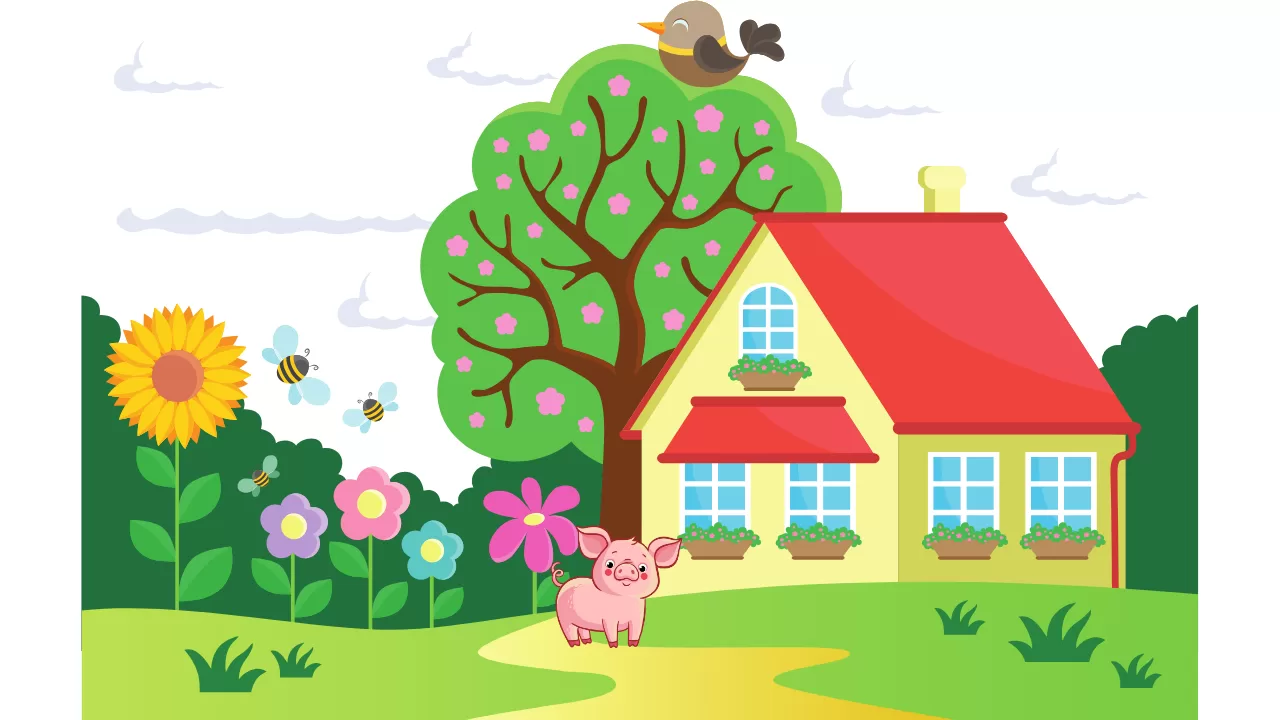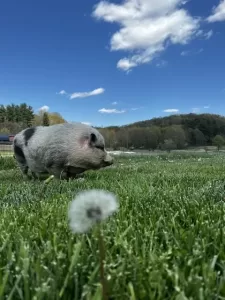
Pig-Friendly Plants: What’s Safe to Grow Around Your Pet Pig
If you’ve ever caught your pig rooting through your garden or nibbling on a leaf, you’re not alone. Pigs are naturally curious—and that curiosity often leads them straight to your landscaping! While many plants can be toxic (even deadly) to pigs, there are plenty of beautiful and functional options that are safe to grow around them.
This is not an exhaustive list of every non-toxic plant out there, but it is a well-researched collection of some of the most common safe plants, trees, bushes, herbs, and grasses you’ll find in yards and gardens across the U.S.

Safe Flowers & Edible Plants
These plants are not only safe but can add color and fragrance to your space:
- Marigolds
- Zinnias
- Sunflowers
- Petunias
- Snapdragons
- Nasturtiums
- Calendula
- Chamomile
- Dandelions (bonus: pigs love them!)
Pig-Safe Herbs
These are great for foraging, enrichment, or adding to your pig’s meals in moderation:
- Rosemary
- Thyme
- Sage
- Lavender
- Basil
- Mint
- Oregano
- Marjoram
- Cilantro
- Parsley
- Lemongrass
Fruits, Vegetables & Edible Plants
These are safe to grow and share with your pig in moderation:
- Cucumbers (and their vines)
- Peas and beans
- Strawberries
- Blueberries
- Pumpkin (whole plant is pig-safe)
- Apple trees
Pig-Safe Bushes & Shrubs
These bushes can safely live in your landscaping or enclosure:
- Roses (flowers and leaves are safe—watch for thorns)
- Hibiscus
- Bee Balm
Trees That Are Generally Safe for Pigs
Trees offer shade, enrichment, and sometimes edible treats for your pig:
- Apple (again, avoid to many seeds)
- Mulberry
- Willow
- Poplar
- Birch
- Maple (avoid red maple, which can be toxic to other animals)
- Bamboo (technically a grass, but often planted like a tree)
- Pear
- Plum (fruit is safe—remove pits)
Pig-Friendly Grasses
Grasses can be great for grazing and enrichment, especially in natural pig yards or pens:
- Timothy grass
- Bermuda grass
- Orchard grass
- Fescue (endophyte-free varieties preferred)
- Kentucky bluegrass
- Ryegrass (annual and perennial)
- Bromegrass
- Wheatgrass
A Word of Caution
Just because a plant isn’t listed here doesn’t automatically mean it’s toxic. This list includes the most common, widely available pig-safe options. But if you’re unsure, always double-check before adding a plant to your pig’s environment.
Also keep in mind:
- Even safe plants can cause mild digestive upset in large quantities.
- Pigs are individuals—introduce new plants slowly.
- Make sure any sprayed or treated plants are fully chemical-free.
Want to Learn Which Plants Are Dangerous?
Inside my Educational Membership Group, I just released a full training on toxic plants—including:
- The top plants found in yards, flowerbeds, and holiday displays that are harmful to pigs
- What toxic reactions look like
- When to call poison control
- A downloadable chart for quick reference
But that’s just the start. In my group, you also get:
- Weekly deep-dive videos on pig behavior, training, and health
- Behind-the-scenes of experiments I do with my pigs (like testing supplements or skincare)
- Access to real-life consults and personalized answers to your pig questions
- An amazing community of pig owners just like you
If you want to go beyond the basics and really understand your pig, this group is for you. Invest in your pig here.
Final Thoughts
Creating a pig-friendly yard or garden is not only safer for your pig – it also makes life easier for you. When you know your landscaping is full of non-toxic plants, you can relax a bit more while your pig explores, grazes, or just lounges in the sun. Whether you’re planting herbs in a pot, designing a piggy pasture, or choosing shade trees for your yard, every choice makes a difference in your pig’s health and happiness.
Always remember, though: your pig doesn’t know what’s safe and what’s not. It’s up to us to do the research, ask questions, and build a space that keeps them thriving. And if you’re ever unsure, don’t go it alone. Inside my Educational Membership Group, we’re constantly learning together, testing things in real time, and helping pigs live their best, healthiest lives—with their humans right there beside them.
